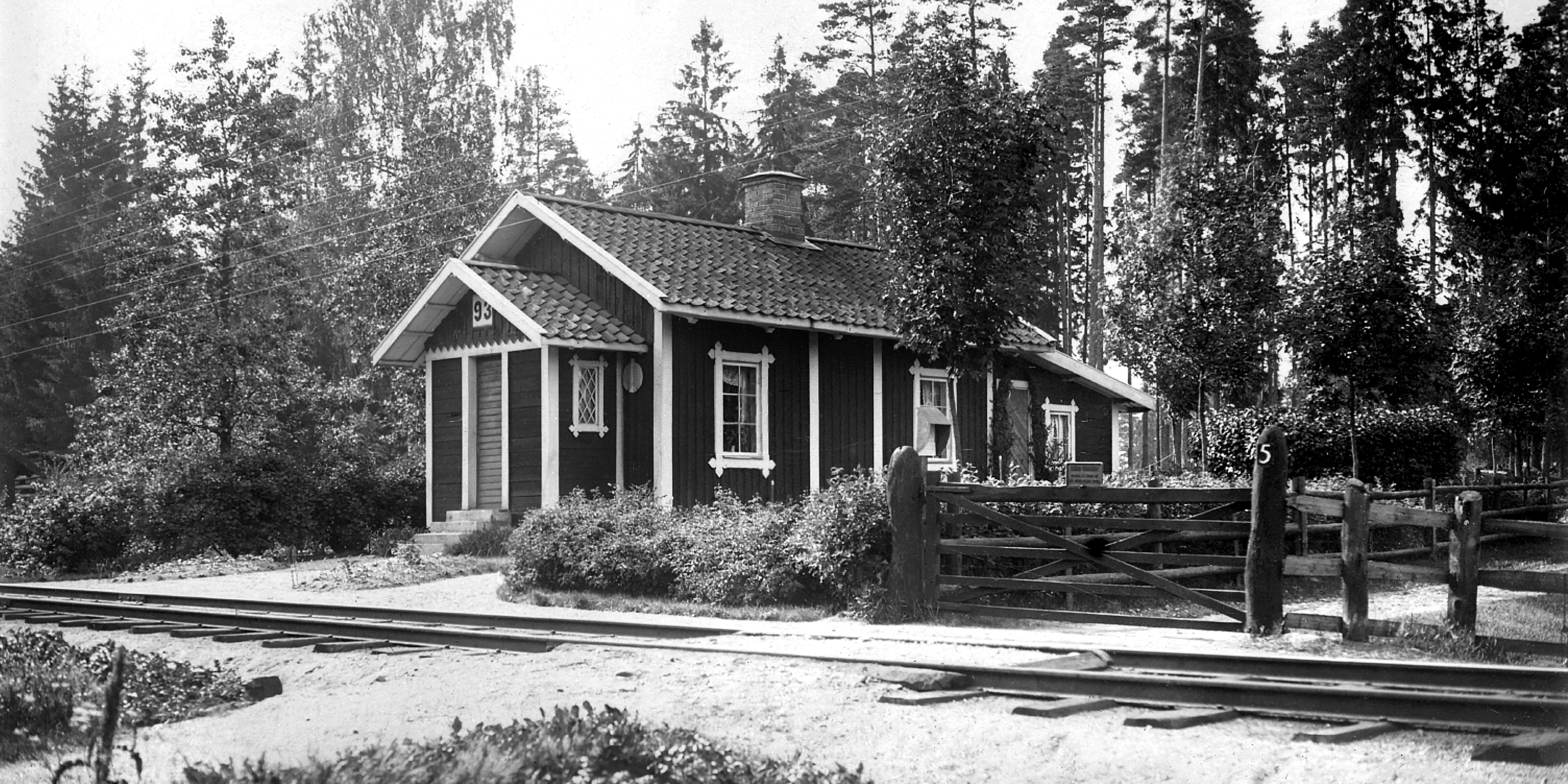
Track tender’s cabins
Various standard models of track tender’s cabins have existed along the railways of Sweden at intervals ranging from 2.5 to 20-odd kilometres.
The smallest model was built in the 1850s and measured 8 x 10 Swedish feet, which is equivalent to 2.4 x 3 metres. It had a vestibule and one room. The entrance to the cabin was on the short side facing the track. An outhouse was situated on the opposite side. Along the Stockholm – Göteborg route, 31 cabins of this model were built, “intended to house unmarried lengthmans”.
This type of lengthman’s cabin was followed by a larger version known as the 1862 model. This cabin had been expanded with an additional room.
After complaints that the cabins were cramped, a new model of cabin was developed. The 1872 model, which also had one of its short sides facing the track, was furnished with two rooms and a vestibule, with the entrance on one of the long sides. The track tender’s cabin included an outbuilding, with room for up to two cows, a calf and perhaps a pig. The outbuilding also had a materials shed, where the lengthman could store his tools, rail spikes, fog signals, etc. The loft of the outbuilding was used to store hay that had been cut along the railway embankments and areas where the lengthman was allowed to cut grass.
A lengthman’s cabin in the 1872 model, Hosäter 213, was moved to the Swedish Railway Museum in 1986 and can be seen on the museum grounds.
As the lengthman system was phased out, so were the cabins. Some were demolished, while others were sold to railway employees as summer cottages. The next time you ride a train, keep an eye out along the tracks. You may be able to spot some lengthman’s cabins that are still standing. Some of them even still have the sign indicating what number designation the cabin had.